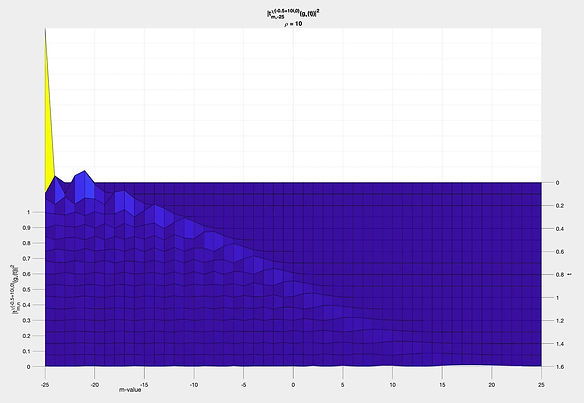LOOP QUANTUM COSMOLOGY
This page presents key portions of my ongoing work with Dr. Bojowald in Loop Quantum Cosmology.
Loop Quantum Cosmology (LQC) is a symmetry-reduced model of Loop Quantum Gravity (LQG), a theory of quantum gravity. The LQG approach treats space as granular, being composed of tiny discrete chunks of space - spatial "atoms". Just like regular atoms have quantized physical characteristics (spin, energy level, etc.), the spatial "atoms" of LQG also take on discretized, quantum characteristics. The quantum characteristics of these spatial "atoms" are most notable when examined within high energy, high (spacetime) curvature, or Planck-scale frameworks. And, Loop Quantum Cosmology provides an excellent opportunity to explore the theoretical consequences of the quantization scheme(s) used in the theory: the Big Bang.
One of the biggest "problems" in General Relativity is how to deal with singularities (black holes, the Big Bang, etc.), and one of LQG's most significant claims is its resolution of this problem in the context of the Big Bang - by avoiding the singularity entirely. The particular spatial dynamics explored early on in LQC's history pointed towards a bouncing universe. A bouncing universe would contract to an incredibly small size, encounter repulsive forces brought about by the quantum effects that can dominate in high energy/high curvature/Planck-scale scenarios, and bounce back up into an inflationary stage. However, this bouncing behavior is a direct consequence of the parameterizations that one chooses to use when exploring the theoretical dynamics of the spatial "atoms" as they approach a singularity.
My current work in LQC explores the dynamics of spatial "atoms", examining various parameterizations of SL(2,R) representations in the LQC framework. When certain parameters take on different values, the net result is a split in the dynamical evolution of our spatial "atoms".
That is, we end up with
at least 2 distinct possibilities:
.
BOUNCING
UNIVERSE

The time-evolved spatial dynamics for
ρ = 0.6
NON-BOUNCING
UNIVERSE

The time-evolved spatial dynamics for
ρ = 10.0
One of the most important differences between these two parameterizations is in their behavior near m = 0, the central value on the bottom horizontal axis.
The overall behavior of the spatial dynamics of our model universe is especially sensitive to variations of the parameter ρ as it approaches a particular value. We can see this behavior more clearly by holding the spatial parameter on the horizontal axis (m) constant, and varying ρ.
In the image to the right, we have isolated 3 snapshots of the dynamics for a fixed m-value across variations in the value for ρ. Next, in order to better understand exactly how variations of ρ affected the spatial dynamics, we chose to highlight only the apex of the crest of the collapsing wavefront. Lastly, the graphs of each of the 3 crests were superimposed using an additive color scheme (Red+Green+Blue=White), resulting in the figure to the right.
Finally, the full dynamics for variations of ρ were superimposed using this same process and scheme, the result of which is presented below.




